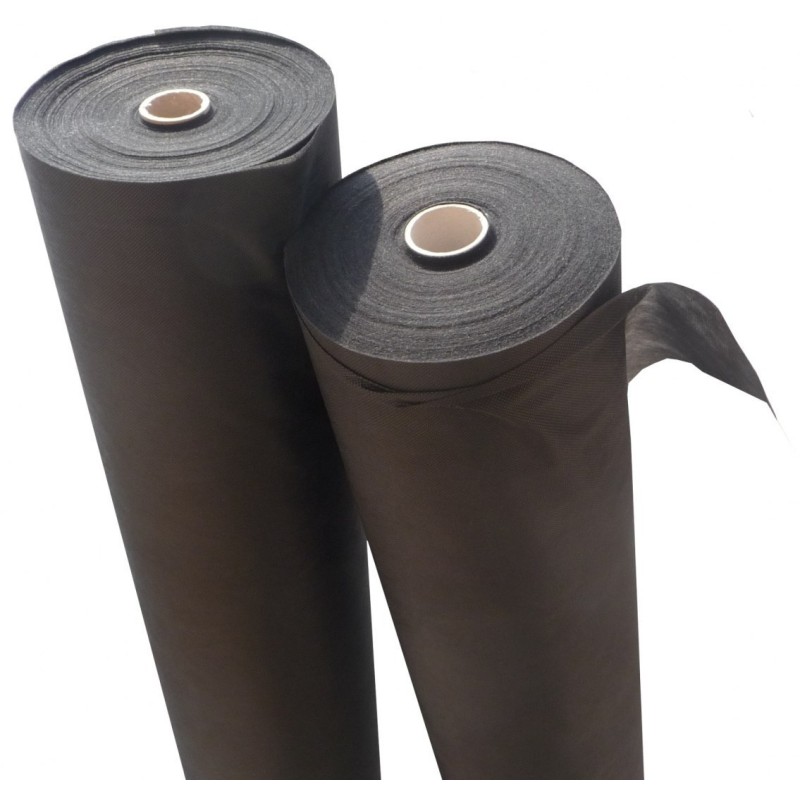GF agrotextile for weeds uv p-50 1.6x100m black
gf 1-6x100
black agrotextile is the most effective way to suppress weed growth. by mulching the soil we strengthen the root system of plants, accelerating their development and increasing their strength. in addition, the agrotextile allows you to regulate soil moisture on the one hand by slowing down water evaporation and on the other by letting rainwater and liquid fertilizers through.
garden designers also use it to create beautiful rockeries and slopes.
an investment that gives profit. best value for money.
characteristics
the highest dose of stabilizer concentrate against UV rays - increases the durability and prolongs the use of the product.
is produced on a German machine - is characterized by a uniform structure, no overloads and the highest tearing strength (confirmed by tests).
in response to demand, we also selected the colors that best suit the applications of agrotextiles.
black agrotextile - the most common and universal, and at the same time the most favorable in terms of price.
due to the color, it increases the soil temperature the most, especially on sunny days.
weight 50g / m2
incredibly durable and uniform structure
protects plants against
weeds without using herbicides,
soil pests,
water evaporation.
benefits of mulching
the ideal visual and decorative effect is provided by pouring bark or small stones on the agrotextile.
with our agrotextile you can forget about weeds in your garden
maintenance of warmth, humidity and airiness of the soil, a favorable microclimate is created
provision of food for soil life - the humus layer increases and enriches with nutrients, protection of the soil from the effects of rain and wind, thanks to which
the humus layer is not damaged
supply of crops with additional amounts of carbon dioxide
thanks to the decomposition of mulch by soil organisms
it is used to mulch many species of crops, but also ornamental shrubs and flowers. it primarily prevents the development of weeds, which facilitates the care of planted plants.
black agrotextile improves phytosanitary conditions, thanks to which plants are less exposed to diseases!!!
black agrotextile also acts as a specific waterproofing agent protecting the soil from excessive moisture loss, while being permeable to water unlike black foil. another advantage is the increase in soil temperature due to the cover, which in turn promotes the development of the root system.
method of use
mulching the soil before sowing or planting: in the places where seeds are planned to be sown or seedlings are planted, holes should be made by cutting the sign x or v with a knife or razor blade. Then sowing or planting is done in the cut holes.
mulching the soil around plants that are already growing: black agrotextile replaces mulching the soil with bark (under conifers, hedges, etc.), therefore the soil around plants that are already growing can be covered with a strip of agrotextile, cutting it from the edge, pushing the cutout to the trunk and then attaching the nonwoven fabric to the soil. the place covered with agrotextile can be sprinkled with fertilizer, irrigated and liquid fertilizers can be used. damaged fragments of agrotextile can be removed or covered with successive layers, maintaining a practical and aesthetic substrate. all kinds of decorative stones, bark, grit can be poured onto the agrotextile.
mulching the soil before harvest: agrotextile used around plants in tunnels and in field crops (strawberries, cucumbers) ensures beautiful, clean fruit harvests without the need to use troublesome straw.
studies have shown that mulching significantly accelerates the vegetative growth of plants.
additional use of agrotextile
water ponds: protects foil and geomembranes used in the construction of ponds, water pools and green roofs from mechanical damage. prevents stones and roots from breaking through the insulating foil.
road construction: strengthens roads, paths, driveways, parking lots, terraces and playing fields, as a separation layer it creates a barrier and separates clay, dusty soil, etc. from the structural layers of the surface. replacing the substrate becomes unnecessary (saving aggregate). limits the formation of ruts.
vertical drainage, drainage pipes: protects the vertical foundation foil from clogging with soil. drains water and keeps basement walls dry. protects drainage systems from silting up.









